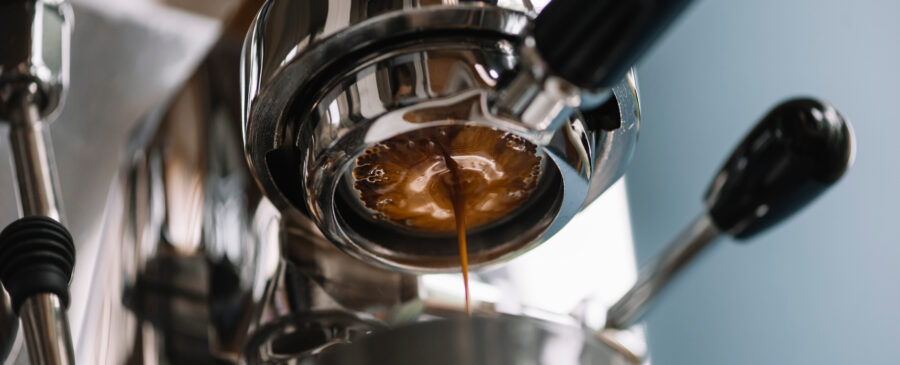Hard-Wired: What Our Coffee Cravings Can Teach Us About Marketing

I’m an espresso fanatic.
The smell of the roasted beans percolating, the sound of a well-loved espresso machine dripping with foamy brown elixir, and of course the first taste of steamy bittersweet perfection. It is a fully integrated part of my everyday routine. As habitual as brushing my teeth or slipping into my shoes. Without it, the day simply doesn’t feel complete. But, it didn’t start out like this. My love for a good espresso has grown with increasing strength over the years to reach the peak of passion I experience sipping it today.
And it’s easy to see why: caffeine is notoriously addictive. But, there is something else, something deeper that makes so many of us almost worship the dark, satisfying brew. Beyond the physiological effects of caffeine, it boils down to the entire ritual that coffee drinking provides. The potent combination of both a physiological and emotional experience is key to a scientifically backed psychological concept and marketing strategy that I call BRANDcebo, or the placebo effect of brands. So, what can coffee cravings teach us about how to build brand awareness that lasts as long as your love for a cup of joe? Let’s talk about it.
Conditioning
We know that consistent caffeine consumption can be habit forming. Just spend some time around a coffee drinker who hasn’t had their daily dose and you know, it’s not a pretty sight. The body’s reaction to caffeine is a hard-wired, unconditioned response. You don’t learn to feel these effects, they happen as a direct result of the beverage. But, coffee’s effect on the body is actually about a lot more than just that caffeine. There is a learned association, or conditioned response, that occurs in the brain, linking the ritual to the reward. That includes not only the physiological effects of caffeine, but also the sensory experience of sipping, the time of day it’s consumed, and even the coffee shop’s logo.
If you’re a regular coffee drinker like me, you know the excitement of anticipation, as your machine burbles and hums, or your favorite barista brews you a cup. That means, even before your first sip of caffeine, you’ve already experienced a physiological, conditioned response. When repeated often enough conditioning occurs. Kind of like hungry hounds racing closer to the sound of their kibble bag crinkling as they salivate for a savory treat. You start to crave the reward your favorite coffee brand brings.
Connection
This stimulating connection that coffee drinkers experience when exposed to the attributes of their favorite coffee brand is astounding. It creates a heightened emotional state that can carry over those same emotions to other cups of coffee, even those from other less-favored brands. This can help us understand why famed coffee brands like Starbucks and Dunkin Doughnuts, have such shocking success with die-hard brand loyalty.
In concert — the products, the emotions elicited by advertising, and the entire experience with the brand, create a deep mind-body connection between a coffee drinker and their cup of joe. The positive effects of a brand, just like a pseudo-drug, can create actual physiological reactions. This is the BRANDcebo effect in action — having such a deep belief in the positive attributes a brand elicits, that it actually results in physical changes to the consumer.
Conscious
The moral of the story is not to drop everything and go out to start a new coffee brand, although you’re more than welcome to do so! This tactic can be harnessed for your existing brand too. It comes down to a revolutionary marketing strategy that goes beyond simply how to build brand awareness. Recognizing a brand is key, but in order to create a lasting, and even life-long, impression we have to surpass the simplicity of traditional marketing models.
Sip on this: Priming is a psychological concept that goes beyond merely identifying the brand, it dives into the emotional, subconscious mind. It is what happens when you experience that heightened state even before the coffee reaches your lips. Just notions that nod to the experience with the brand can create a full-body experience that likely will go unnoticed by your conscious mind.
Capture
Now that you know the mechanisms at play, here is how to prime your audience, the first step to achieving BRANDcebo, in your own venture. Accessing the subconscious mind with marketing strategy is about reaching the part of the brain that makes decisions based upon things that aren’t always rational. Intangible things like feelings that don’t have to abide by fact and reasoning.
Let’s recreate this intense full body experience that we have drinking coffee with other brands too. Let’s say you own a gym. Prime your customers to experience an elation associated with your brand through advertising that associates working out at your gym with the elated “high” of post sweaty workout bliss. Build up the endorphin craving in your customers that gets them totally hooked on the relationship they have with your brand and how it makes them feel.
Curate
So, now you’ve got it down. But let’s examine another, less traditional example of how to sustain this powerful effect with brand loyalty. To achieve this, you need to recognize the feelings your potential customers are looking for and make them feel it when they interact with your brand. It might sound simple, but what about a brand where pleasant emotions don’t usually come to mind?
Let’s take a medical office, for example. You can flip the negative narrative of doctors visits, all too often characterized by fear and anxiety. Instead, associate your brand with care, safety, comfort, and positivity. Remind patients why they are really there: to feel confident and in control of their health. Show these emotions in your advertising and be sure to create an uplifting and collaborative environment in your office that elicits those feelings.
Priming is just the first step in brewing up BRANDcebo. To taste the magic it can bring for your marketing strategy, you can read more in my book here.
